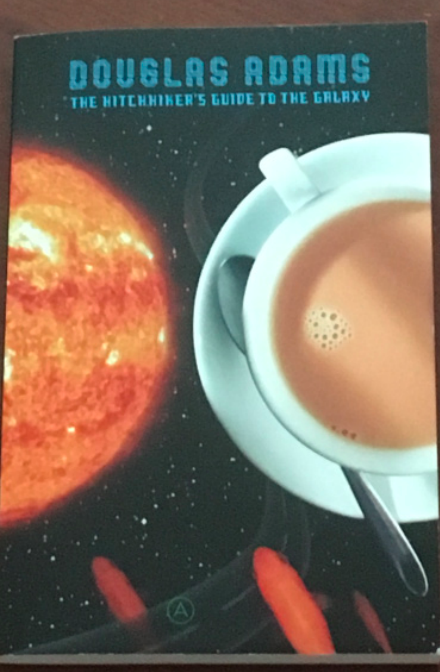By Josie Rerecich
Staff Writer
“The Hitchhiker’s Guide to the Galaxy” by English author Douglas Adams is a wholly remarkable book. The first in a trilogy of five books, “The Hitchhiker’s Guide to the Galaxy” tells the comedic science-fiction story of Arthur Dent.
Dent’s biggest worry when the book begins is that his house is about to be demolished for a new bypass. By end of the third chapter, the entire Earth is demolished by aliens to make way for a hyperspatial express route. Dent only survives because of his friend Ford Prefect, who Dent learns is from the Betelgeuse star system. (Prefect’s name is a clever joke that most American readers won’t get. It’s the name of a popular British car.)
Prefect was stranded on Earth for 15 years, doing research for a guidebook entitled “The Hitchhiker’s Guide to the Galaxy.” Dent and Prefect survive the demolition of the Earth by hitchhiking onto a passing spacecraft.
What follows is a hilarious space adventure involving the third-worst poetry in the universe, a stolen spacecraft powered by the galaxy’s first Infinite Improbability Generator, a history lesson containing the answer (but not the question) to life, the universe and so much more.
Along the way, Dent and Prefect meet up with characters like Zaphod Beeblebrox, Prefect’s two-headed, three-armed semi-cousin and ex-Galactic President, Trillian, a female mathematician and astrophysicist who Beeblebrox met at a party he gatecrashed on Earth six months previously, and Marvin, a robot prototype for Sirius Cybernetics Genuine People Personalities technology, who is always in a state of severe depression.
While this story is hilarious and highly entertaining, some of the exposition is so ridiculous that it doesn’t seem to make sense, such as the origins of the Infinite Improbability Generator. Whether the exposition is supposed to not make sense, or it does make sense if you read very, very closely, is uncertain.
Other parts of the exposition are treated as if the reader is not from Earth, and is supposed to have a general idea of what the book is talking about, such as the Great Collapsing Hrung Disaster of Gal./Sid./Year 03758 that destroyed Prefect’s home planet. While this concept is entertaining, it does leave the reader wondering the details.
“The Hitchhiker’s Guide to the Galaxy” ends with a setup to the second book in the series, “The Restaurant at the End of the Universe,” that makes the reader think they absolutely need to buy the next book.






Be First to Comment